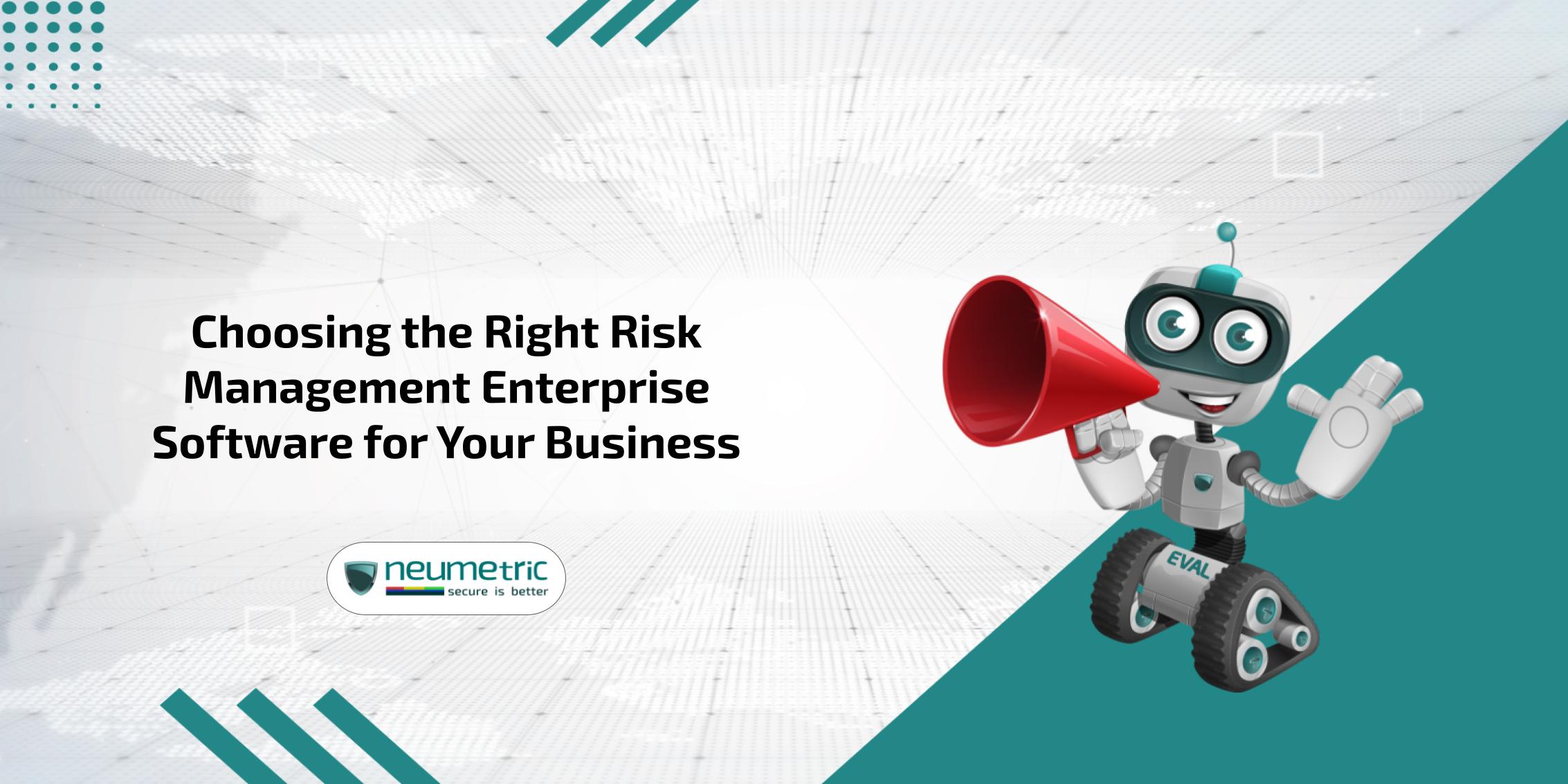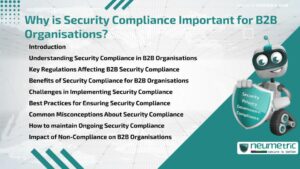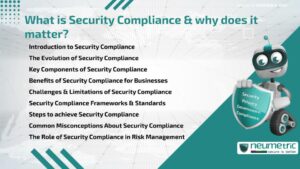Table of Contents
ToggleIntroduction
Business can be imagined as a ship navigating treacherous waters. In calm seas, you might rely on basic navigation tools. But as the waters become more turbulent & unpredictable, you need sophisticated equipment to detect hidden dangers, plot safe courses & respond swiftly to emergencies. This is precisely the role that risk management enterprise software plays in the modern business landscape.
The evolution of risk management practices has been nothing short of revolutionary. From simple spreadsheets & manual processes, we’ve progressed to comprehensive, AI-driven platforms that can predict, assess & mitigate risks in real-time. This shift has been driven by the increasing complexity of business operations, the rapid pace of technological change & the growing recognition of risk management as a strategic imperative.
As we delve deeper into this topic, we’ll explore the key features of risk management enterprise software, evaluate different types of solutions & provide a framework for choosing the right platform for your organization’s unique needs.
Understanding Risk Management Enterprise Software
What is Risk Management Enterprise Software?
Risk management enterprise software is a comprehensive platform designed to help organizations identify, assess, monitor & mitigate various types of risks across their operations. Unlike standalone risk assessment tools or basic compliance checkers, enterprise-grade solutions offer a holistic approach to risk management, integrating with various business processes & providing actionable insights to decision-makers.
These platforms typically encompass a wide range of functionalities, including:
- Risk identification & assessment
- Risk monitoring & reporting
- Compliance management
- Incident management
- Business continuity planning
- Data analytics & predictive modeling
The Evolution of Risk Management Software
The journey of risk management enterprise software is a testament to the changing nature of business risks & technological capabilities.
- Early Days: Basic spreadsheets & databases
- First Generation: Standalone risk assessment tools
- Second Generation: Integrated risk management platforms
- Current Generation: AI-driven, predictive risk management solutions
The concept of risk management is not new, but the tools & technologies used to address it have evolved significantly. From manual spreadsheets to advanced AI-driven solutions, risk management enterprise software has come a long way. Today’s platforms offer real-time analytics, predictive modeling & seamless integration with other business systems, providing a holistic view of an organization’s risk landscape.
Key Features to Look for in Risk Management Enterprise Software
Comprehensive Risk Assessment Capabilities
The foundation of any effective risk management enterprise software is its ability to conduct thorough risk assessments. Look for platforms that offer:
- Customizable risk assessment templates
- Quantitative & qualitative risk analysis tools
- Scenario modeling & simulation features
Real-Time Monitoring & Alerts
In the fast-paced business world, staying ahead of potential risks is crucial. Opt for software that provides:
- Real-time risk monitoring dashboards
- Automated alert systems for risk threshold breaches
- Customizable notification settings
Integration & Compatibility
Your risk management enterprise software should seamlessly integrate with your existing systems. Consider solutions that offer:
- API integration capabilities
- Compatibility with common business applications
- Scalability to grow with your organization
Reporting & Analytics
Data-driven decision-making is essential in risk management. Choose software that delivers:
- Customizable reporting tools
- Advanced analytics & data visualization features
- Predictive modeling capabilities
Compliance Management
With ever-changing regulatory landscapes, compliance management is a critical feature. Look for:
- Built-in compliance frameworks (example: GDPR, HIPAA, SOX)
- Automated compliance reporting
- Regulatory update tracking
The Selection Process: A Step-by-Step Guide
Choosing the right risk management enterprise software is a critical decision that requires careful consideration. Here’s a step-by-step guide to help you navigate the selection process:
Assess Your Organization’s Needs
Before you start evaluating software options, take a deep dive into your organization’s risk management requirements:
- What types of risks do you need to manage?
- What are your current risk management processes?
- What are the pain points in your current approach?
- What are your compliance requirements?
- What is your budget for risk management software?
Define Your Must-Have Features
Based on your needs assessment, create a list of essential features for your risk management enterprise software. This might include:
- Specific risk assessment methodologies
- Integration capabilities with existing systems
- Particular compliance frameworks
- Mobile accessibility
- Advanced analytics & reporting features
Research & Shortlist Potential Solutions
With your requirements in hand, start researching available solutions:
- Read industry reports & reviews
- Attend software demos & webinars
- Consult with industry peers & experts
- Create a shortlist of three (3) to five (5) potential solutions that best match your needs
Conduct In-Depth Evaluations
For each shortlisted solution, conduct a thorough evaluation:
- Request detailed product demonstrations
- Ask for trial periods or sandbox environments to test the software
- Evaluate the user interface & ease of use
- Assess the vendor’s customer support & training offerings
- Check for scalability & future development roadmap
Consider Total Cost of Ownership
Look beyond the initial price tag & consider the Total Cost of Ownership [TCO] over a three (3) to five (5) year period. This should include:
- Software licensing fees
- Implementation & customization costs
- Training expenses
- Ongoing maintenance & support costs
- Potential hardware upgrades or cloud hosting fees
Check for Vendor Reliability & Support
The relationship with your software vendor is crucial for long-term success. Evaluate:
- The vendor’s financial stability & market presence
- Customer reviews & testimonials
- The vendor’s support & Service Level Agreements [SLAs]
- The vendor’s track record of product updates & innovations
Plan for Implementation & Change Management
- Finally, consider how you’ll implement the new software & manage the organizational change:
- How will you migrate existing data?
- What training will be required for users?
- How will you phase out old systems & processes?
- How would the success of the implementation be measured?
Implementation & Adoption Strategies
Selecting the right risk management enterprise software is only the first step. Successful implementation & adoption are crucial for realizing the full benefits of your chosen solution.
Phased Implementation Approach
Consider a phased approach to implementation:
- Planning & preparation
- Pilot testing with a small group or department
- Gradual rollout across the organization
- Continuous monitoring & adjustment
User Training & Support
Invest in comprehensive training programs:
- Offer role-based training sessions
- Provide ongoing support & resources
- Encourage feedback & address user concerns promptly
Change Management
Manage the organizational change effectively:
- Communicate the benefits of the new system clearly
- Address resistance & concerns proactively
- Celebrate early successes to build momentum
Overcoming Implementation Challenges
Selecting the right risk management enterprise software is only half the battle. Successful implementation is crucial for realizing the full benefits of your investment.
Common Implementation Pitfalls
- Lack of clear objectives & success metrics
- Insufficient user training & adoption
- Poor data migration & integration
- Inadequate customization to fit organizational processes
- Failure to secure buy-in from key stakeholders
Strategies for Successful Implementation
- Develop a clear implementation roadmap with defined milestones
- Invest in comprehensive user training & change management
- Start with a pilot program before full-scale rollout
- Ensure strong project management & executive sponsorship
- Regularly collect & act on user feedback during implementation
Measuring ROI & Success
To justify the investment in risk management enterprise software, it’s essential to measure its impact on your organization.
Key Performance Indicators [KPIs]
Monitor relevant KPIs, such as:
- Reduction in risk incidents
- Improved regulatory compliance rates
- Time saved on risk assessment & reporting
- Enhanced decision-making speed & accuracy
Long-Term Benefits
Consider the long-term value of your risk management enterprise software:
- Increased organizational resilience
- Improved stakeholder confidence
- Enhanced competitive advantage
- Potential cost savings from avoided risks
Future Trends in Risk Management Enterprise Software
As technology continues to evolve, so does risk management enterprise software. Stay informed about emerging trends:
- Artificial Intelligence [AI] & Machine Learning [ML] integration
- Blockchain for enhanced data security & transparency
- Internet of Things [IoT] for real-time risk monitoring
- Advanced predictive analytics & scenario modeling
Conclusion
Choosing the right risk management enterprise software is a critical decision that can significantly impact your organization’s ability to navigate an increasingly complex business environment. By carefully assessing your needs, evaluating key features & implementing a robust adoption strategy, you can harness the power of these sophisticated tools to build a more resilient & successful organization.
Remember, the journey doesn’t end with selection & implementation. Continuously monitor, evaluate & adapt your risk management practices to ensure your chosen solution continues to meet your evolving needs. With the right risk management enterprise software in place, you’ll be well-equipped to tackle whatever challenges come your way, turning potential risks into opportunities for growth & innovation.
The future of risk management is dynamic, data-driven & deeply integrated into business operations. By choosing the right risk management enterprise software today, you’re not just solving current challenges—you’re positioning your organization for success in an unpredictable future.
As you move forward, ask yourself: How can we leverage risk management not just as a defensive tool, but as a strategic advantage? How can we use the insights gained from our risk management software to drive innovation & create value? The answers to these questions will not only guide your software selection but shape the future of risk management in your organization.
Key Takeaways
- Risk management enterprise software is essential for identifying, assessing & mitigating potential risks across various aspects of business operations.
- Key features to look for include comprehensive risk assessment capabilities, real-time monitoring, integration with existing systems, advanced reporting & analytics & compliance management tools.
- Assess your organization’s specific needs based on industry, size, structure & risk management maturity before selecting a solution.
- Successful implementation involves a phased approach, comprehensive user training & effective change management strategies.
- Measure the ROI of your risk management enterprise software by tracking relevant KPIs & considering long-term benefits to the organization.
- Stay informed about future trends in risk management technology to ensure your chosen solution remains relevant & effective.
Frequently Asked Questions [FAQs]
What is the primary purpose of risk management enterprise software?
The primary purpose of risk management enterprise software is to help organizations identify, assess & mitigate potential risks across various aspects of their operations. It provides a centralized platform for managing risks, improving decision-making & enhancing overall organizational resilience.
How does risk management enterprise software differ from traditional risk management methods?
Risk management enterprise software offers advanced features like real-time monitoring, automated alerts, predictive analytics & seamless integration with other business systems. Unlike traditional methods, which often rely on manual processes & spreadsheets, enterprise software provides a more comprehensive, efficient & data-driven approach to risk management.
Is risk management enterprise software suitable for small businesses?
Yes, risk management enterprise software can be suitable for small businesses. Many vendors offer scalable solutions that can be tailored to the needs & budget of smaller organizations. While the features may be less complex than those required by large enterprises, small businesses can still benefit from improved risk visibility & management.
How long does it typically take to implement risk management enterprise software?
The implementation timeline for risk management enterprise software can vary depending on the size of the organization, the complexity of the chosen solution & the level of customization required. On average, it can take anywhere from a few weeks for simple implementations to several months for more complex, enterprise-wide rollouts.
Can risk management enterprise software help with regulatory compliance?
Absolutely. Many risk management enterprise software solutions include built-in compliance management features. These can help organizations stay up-to-date with relevant regulations, automate compliance reporting & ensure that risk management practices align with regulatory requirements across various industries & jurisdictions.





